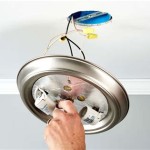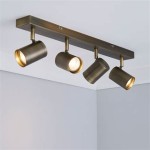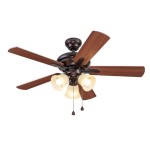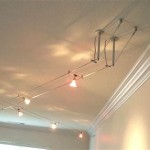Illuminate Your Low Ceiling Rooms: Essential Aspects to Consider
When it comes to illuminating rooms with low ceilings, it's crucial to approach the task with meticulous consideration. Low ceilings can sometimes pose challenges, but with the right lighting techniques, you can create a visually appealing and welcoming space. Here are essential aspects to keep in mind for lighting low ceiling rooms:
1. Choose Light Fixtures Wisely
Selecting the right light fixtures is paramount in low-ceiling rooms. Ceiling-hugging fixtures, such as flush mounts, close-to-ceiling pendants, and recessed lights, sit close to the ceiling, minimizing the sense of height reduction. Avoid bulky or hanging light fixtures that can overwhelm the space and further lower the perceived ceiling height.
2. Utilize Vertical Illumination
Incorporating vertical illumination can draw attention away from the ceiling and create an illusion of height. Floor lamps and uplighting create a vertical emphasis, directing light upwards to highlight walls and architectural features. This technique helps elongate the space visually, making it appear more expansive.
3. Opt for Reflective Surfaces
Using reflective surfaces is a clever way to bounce light around the room and amplify its effects. Mirrors, glossy paint finishes, and metallic accents reflect light, creating the illusion of a larger space. Strategically placing mirrors opposite windows or light sources enhances the natural light and maximizes illumination.
4. Layer Your Lighting
Layering different types of lighting creates depth and interest in low-ceiling rooms. A combination of ambient lighting, such as ceiling lights, provides overall illumination. Task lighting, like desk lamps or floor lamps, offers focused light for specific areas. Accent lighting, such as picture lights or spotlights, highlights artwork or architectural details, drawing attention away from the ceiling.
5. Control Light Distribution
Directing light towards walls and architectural features can create a dramatic effect. Using spotlights or sconces to illuminate artwork, shelves, or walls draws the eye upward, making the ceiling appear higher. Bounce lighting off walls using indirect lighting fixtures to create a soft, diffused glow that minimizes ceiling shadows.
6. Consider Natural Light
Maximizing natural light is crucial for low-ceiling rooms. Keep windows uncovered and use sheer curtains or blinds to filter light without blocking it. Skylights or solar tubes can introduce additional natural light, creating a brighter and more airy atmosphere. Position furniture and obstacles away from windows to ensure unobstructed light flow.
7. Utilize Color and Design
Color and design can influence the perceived height of a room. Lighter colors, such as white, cream, or pale shades, reflect more light and create a sense of spaciousness. Avoid dark colors on walls and ceilings, as they can make the room feel more confined. Patterns and textures add visual interest without overwhelming the space.
Conclusion
Lighting low ceiling rooms requires a thoughtful approach. By considering these essential aspects, you can create a functional and visually appealing space. With the right lighting techniques, you can transform a low-ceiling room into a bright, inviting, and comfortable environment that maximizes space and minimizes the perception of height constraints.

How To Light A Room With Low Ceilings

Low Ceiling Lighting Ideas For Your Home Designcafe

Low Ceiling Lighting Ideas For Your Home Designcafe

25 Of The Best Living Room Lighting Ideas For Low Ceilings Lightopia

Dramatic Lighting For Low Ceilings

Tips For Lighting A Room With Low Ceilings Lightstyle Of Tampa Bay

How To Light A Space With Low Ceilings The Lightbulb Co

Low Ceiling Flush Mounted Pendant Lighting Solution Spread Out

5 Creative Lighting Ideas For Low Light Room House To Home Organizing

Lighting Ideas For Living Room With Low Ceiling E Architect
Related Posts








